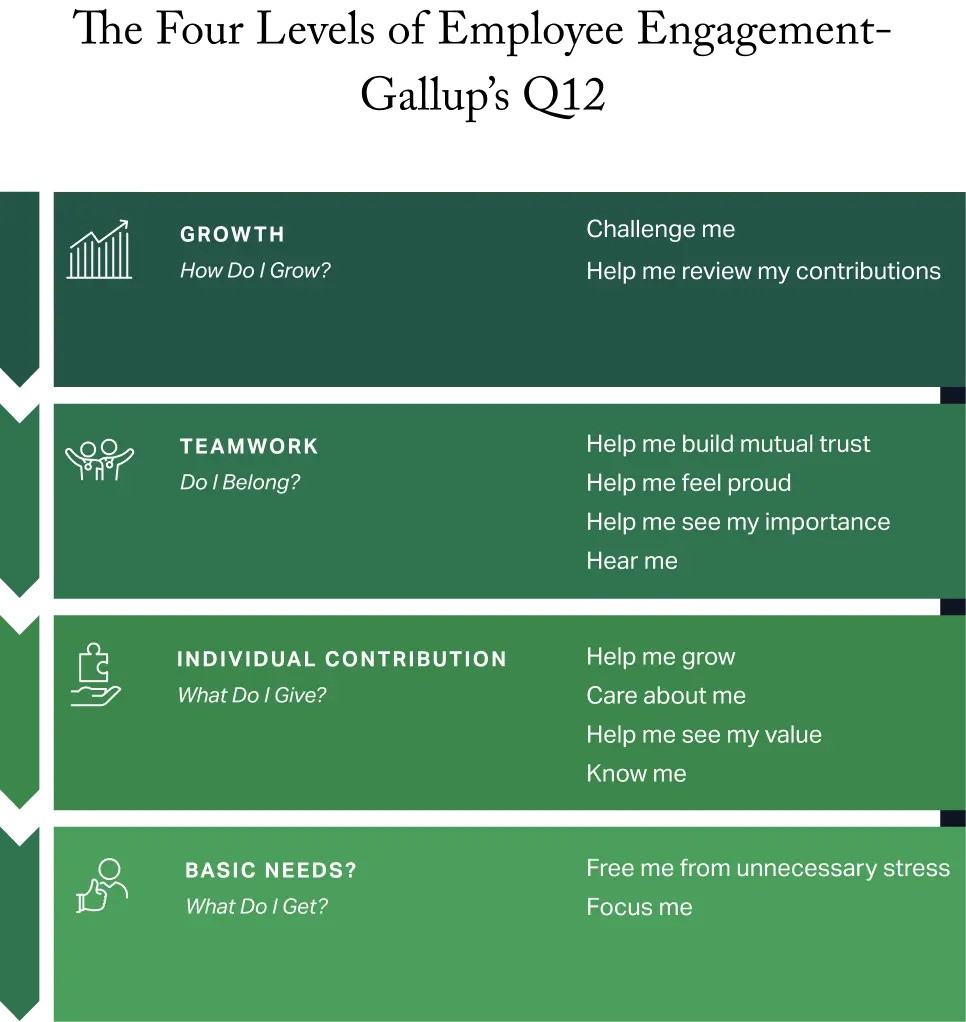In January of this year, Gallup sounded the alarm about employee engagement sinking to a 10-year low, with only 31% of employees engaged, matching a figure last seen in 2014. Gallup describes engagement as “the involvement and enthusiasm employees feel toward their work and workplace” noting that declines in engagement signal potential vulnerabilities for businesses. Low engagement is a significant drag on productivity, “costing the world economy an estimated $438 billion in lost productivity,” according to Gallup estimates,.
Gallup noted 3 distinct declines among a dozen key measures used to gauge employee engagement:
- Clarity of expectations.
- Feeling someone at work cares about them as a person.
- Someone encouraging their development.
What can managers do in the face of this disengagement? Gallup offers three ways that strong managers can reverse engagement declines:
- Define what they want in their workplace culture and how that aligns with the organization’s purpose and value to customers.
- Lead with their own strengths while clarifying the organization’s purpose, approach to people, key decisions and performance. Specifically, include a plan for upskilling managers to build stronger bonds between employees and the organization through clear priorities, ongoing feedback, and accountability.
- Prioritize identifying and selecting managers with the innate ability to engage and inspire employees, especially in a workplace environment where employees feel detached.
In April, Gallup released its State of the Global Workforce Report 2025, noting declines in both employee engagement and employee wellbeing, with “implications for corporate productivity, innovation and performance.” See: Global Engagement Falls for the Second Time Since 2009.
Among key points in the report:
- Engagement has only fallen twice in the last dozen years: in 2024 and in 2020.
- Managers are experiencing the sharpest decline, from 30% to 27%.
- Global employee wellbeing dropped after 5 years of steady improvement.
- With full engagement, Gallup estimates that $9.6 trillion in productivity could be added to the global economy, the equivalent of 9% in global GDP.
However, Gallup noted a segment of high-performing employers that bucked the trends, and offers insight into how they did this:
“The best organizations Gallup has studied put manager training and development at the center of their strategy. Even rudimentary training shows benefits to engagement. However, managers who receive best-practice training have seen their own engagement and their team’s engagement improve substantially. Management performance metrics improved by 20% to 28%.”
How can employers increase engagement?
Good news – Gallup offers a rather extensive guide: What Is Employee Engagement and How Do You Improve It? It talks about what employee engagement is, why it is important, what key drivers of engagement are, ideas for improving engagement, and more. One aspect of this 10-point guide we found particularly helpful is the Employee Engagement Model, offering a motivational and development roadmap.

More on Gallup’s 2025 Global Workforce Report
-
View a free 24-minute Gallup webinar that offers key insights into this report
- For an even deeper dive, download Gallup’s 11th employee engagement meta-analysis, which examines “decades of engagement and performance data from more than 100,000 teams to evaluate the connection between employee engagement and 11 key business outcomes.”
Related:
- Recent Mental Health Studies Point to High Demand for Workplace Support
- Surveys show how employees view their jobs; the importance of earning trust
- The Key to Employee Satisfaction & Engagement: Personal & Professional Development

